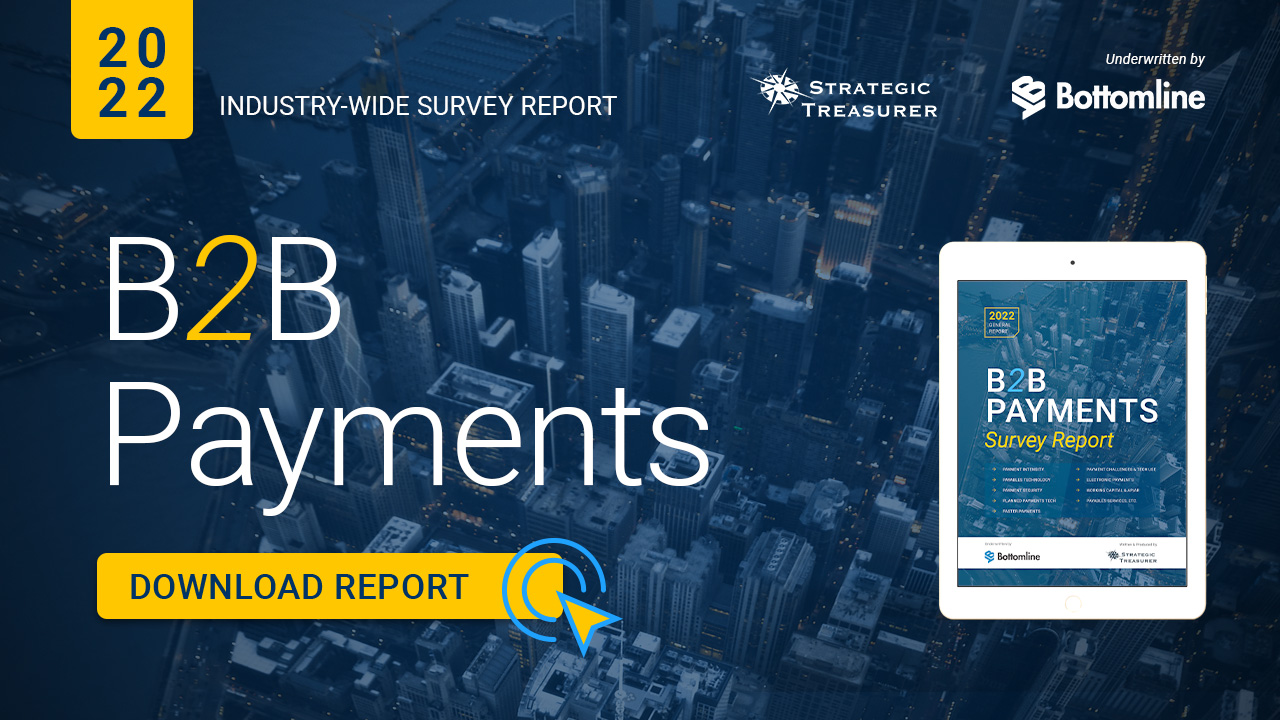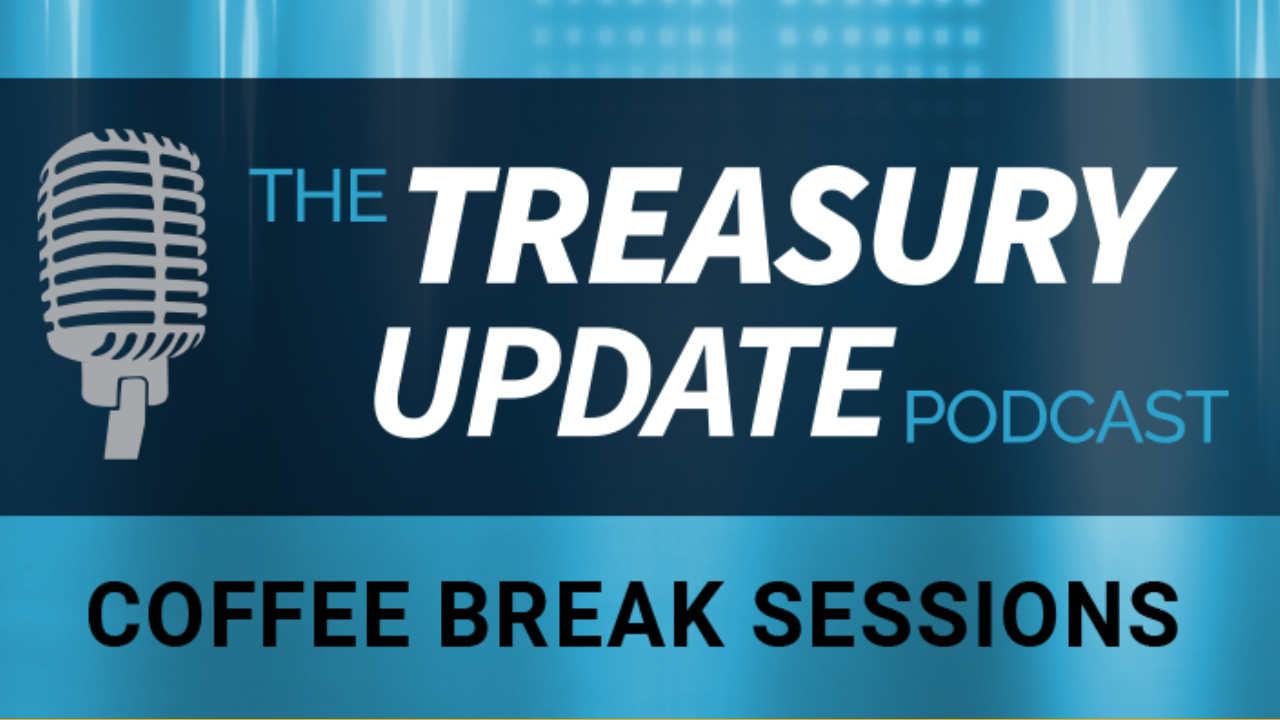
Session 82
Coffee Break Session:
ACH Format vs. Standard Entry Class (SEC)
Host:
Jason Campbell, Strategic Treasurer


Speaker:
Craig Jeffery, Strategic Treasurer


Episode Transcription - (Coffee Break Session Series) - Episode 82 - ACH Format vs Standard Class Entry?
Jason Campbell 00:03
Welcome to the Treasury Update Podcast, Coffee Break Sessions presented by Strategic Treasurer covering foundational topics and core treasury issues in about the same amount of time it takes you to drink your cup of coffee. I’ll be your host Jason Campbell, business development leader at Strategic Treasurer. Welcome back for another great episode of the Coffee Break Session, kind of piggyback off our last session that we did have around ACH, we’re going to continue this conversation moving forward. And I, again, I think payment is such a great interesting topic, because there’s just really so much into it and just really want to make sure that you know, as any organization or individual just, it’s important to make sure that we have kind of an understanding of the payment processing. Joining me today again, is Craig Jeffery, managing partner at Strategic Treasurer. Craig again, glad to have you on today.
Craig Jeffery 00:48
It’s good to be here, Jason.
Jason Campbell 00:49
Kinda want to talk a little bit more about formatting, really the ACH format versus the standard entry class, otherwise known as the SEC. First, can you give us a quick intro to what these two what exactly what are they?
Craig Jeffery 01:04
This is a hard topic for a podcast, because we’re just talking verbally, right? It’d be a lot easier to show a few things about it. But but over overall, a NACHA has a file format. And this is a structured file format, where it has, you know, different record numbers that designate like, you know, the beginning of the file, and then at the end, the end of the file and the one and nine records and, and then they have batches within those and then detailed records within those as well as dental records. So NACHA has an overall file format that’s used, referred to as an ACH file format. Standard entry classes are types of ACH transactions. A lot of times people refer to those as separate formats, you know, for those that love formats, as they know, they’re, they’re the same format, there’s just different records in those fields. And there’s different applications of how those formats look. So I just say that, for purposes, if you talk to a real ACH Pro, they’re going to talk about those differences. If you’re talking to almost everybody else, you know, almost everybody in treasury, etc, they may use those in a synonymous way, you know. An SEC, a standard entry class, is just how, you know the ACH network designates different payments. So your direct deposit payroll is probably a PPD or a PPD plus, the plus just designates, hey, there’s an addenda record with that. So there’s a ability to stick, I think it’s about 80 character record in there to include more information, but let’s say, let’s say direct deposit payroll is a PPD. Now that will have a very similar format to a CCD, or a CCD plus. The cash concentration disbursement format, that’s what the CCD stands for. But this is really a corporate payment. So it’s not really a personal payment, you know. Think of PPD as a personal payment payment, or payment to or a debit against a personal account, whereas the CCD is between corporations. So it’s a corporate to corporate transaction. The format, and the fields are essentially the same, but the standard entry class is what’s different. And where that, I’m gonna say probably more what you’d be asking whatever the, the difference is, there’s different rules that govern transactions with consumers versus businesses. So if I’m, let’s say, I’m debiting, you as a company, there’s a certain period of time, you have to dispute it, because you as a company should be reviewing your records more regularly. And so there’s a shorter window, then let’s say a consumer. A consumer has, you know, not just, you know, two or three days, but it’s, they have a much longer period of time to review their records, because they’re their consumers, they may not look at their bank statements, almost ever, or for a period of time. And so the fact that it’s a PPD or a CCD is almost identical in the record, and may even be identical. I’m trying to go off the top my head, but it’s the the rules differ based on the standard entry classes used.
Jason Campbell 04:03
So outside of, you know, I know that you said that, yeah, they’re the pretty kind of handed handle almost in a parallel universe, right? Is there anything that’s in particular like that? What’s that relationship between them? Is it just mainly just around coding? Is that really what the relationship is?
Craig Jeffery 04:19
It is and the reason and the reason I think this is, this is at least a topic worth bringing up, I probably should do a Coffee Break Session with video so I can show the differences, because that will make that will make it a lot easier for people. Some are concepts that it’s easy to hear and think about this. When you start to talk about formats, it’s you have to be able to visualize pretty well and the person who’s speaking has to be able to explain in a way that people can visualize which I think is a little bit more challenging, but it’s usually people misuse the the terms and the understanding of formats. I say all the time I talk about oh, it’s a PPD format, or CTX format or it’s Tell, whatever I’ll say format just because I’m uncareful with that. And that’s fine in most conversations, unless you’re talking to people from the ACH group at the bank, and then and then that’s the, you know, you’re not being very particular, right? So that’s where it is.
Jason Campbell 05:17
So with these, like, talk to us about, are there any requirements and more broadly, like, who mandates them?
Craig Jeffery 05:23
Well, NACHA comes up with a rules, they list the rules, and they have different times where they, they submit them, they let you know, when they’re going to come out, it gives the bank time, the bank’s time to change and get their systems ready. And the system providers that support the banks prepare their their changes, and give them to the bank so they can support that activity. So new standard entry classes come out every few years, almost, you know, there was this rush a number of years ago with a telephone and cheque truncation, all these different formats that allow people to convert different types of items into ACH. So I guess your question is like, who mandates those, it’s really the group does it based upon, the association does it based on feedback from their members, particularly feedback from their member banks, but also quite a few corporations provide input into that to make the network more efficient, and to handle some of the differences of what may be needed. So for example, I mentioned CTX, corporate trade exchange, that’s a three digit standard entry class for corporate payments, like a CCD is a corporate payment, or corporate debit, a CCD plus, has one addenda record, and a CTX can have you know, just under 10,000, addenda records. If you wanted to send lots and lots of payment information with a here’s the invoice number, etc. So you can use a component of an EDI transaction that BPR the business payment record that says, like, IMV*, you know, has the information about the invoice number, date, transaction amount, if there’s any discount, and so that can come through digitally, you know, I’m paying 500 invoices. That can come through digitally. So it provides different functionality.
Jason Campbell 07:06
So it’s funny, as you’re talking about these different, you know, form types and recordings. So why is data recording so important? Why, you know, so as you you were talking about each transaction, and the and the codes and everything that go through, why why is all that so important?
Craig Jeffery 07:25
Well, the format’s and the data that goes into each, you know, field is important, because that’s how the systems work. Some of the some of the information that comes through interfaces with the bank’s back end system, their ACH system, which usually says, How does this settle? What are offsets done? Who gets charged? All these different parameters that triggers the setup, right? Multiple files or types of files, can come to a bank, hitting the same bank account that you own, you know, as a company, but there’s different ways it’ll be processed. And so some of that data matters there for how it’s handled, accounted for, how returns are processed. The other element of why is the data important? Well, if you look at, there’s file control totals in there, how many items, what’s the value, there’s batches. And there might be multiple batches within a file, those things matter because, one, it provides for file integrity. Has the entire file been sent, are any transactions missing, did something drop? So that allows for that type of activity. The other is, you know, each batch, let’s say you send, let’s say, to Wednesday, before Thanksgiving in the US, you could send two or three batches at once. One is the settlement date of Friday after Thanksgiving. One is Monday, one is Tuesday. So that could go in the same batch. I mean, sorry, could go on the same file. But each batch would have a different settlement date. And so they could go through the system. And so your account as a company, they would have an AP debit for Friday, there’d be a debit on Friday, debit on Monday, and debit on Tuesday, based upon those batches for those that have settlement dates. So all that all those records govern the control of files, the settlement of information, how returns happen. And then the codes that use like the standard entry class, there’s other requirements, other guidelines that are driven off of the rules based upon those standard entry classes.
Jason Campbell 09:22
I think it’s interesting as you were talking about the differences in the batches, and, you know, just got my mind thinking like, yeah, you know, you know, when you see things like, hey, it’s it’s, uh, 48 hours or, you know, it’s obviously the next business day, which would be that following Monday, in most cases, with the exception of a holiday. You know, having those codes and making sure everything’s aligned appropriately, I’m sure is definitely important to keep track of. So now it’s all great valid points there. Well, Craig. Well, thank you again for joining me today. I really do appreciate it. For our listeners, please be sure to tune in every first and third Thursday of the month for a new episode of the Coffee Break Session. As usual. If you have any questions, comments or feedback, please send us a note at podcast@StrategicTreasurer.com. Until next time, take care.
Announcer 10:06
This podcast is provided for informational purposes only, and statements made by Strategic Treasurer LLC on this podcast are not intended as legal, business, consulting, or tax advice. For more information, visit and bookmark StrategicTreasurer.com.
This study provides valuable insights related to the overall payments complexity and challenges being experienced by practitioners within the treasury and finance environment, and also sheds light on the unique solutions and tactics employed by organizations to optimize payment processes and maximize efficiency.
A part of the Treasury Update Podcast, Coffee Break Sessions are 6-12 minute bite-size episodes covering foundational topics and core treasury issues in about the same amount of time it takes you to drink your coffee. The show episodes are released every first and third Thursday of the month with Host Jason Campbell of Strategic Treasurer.




